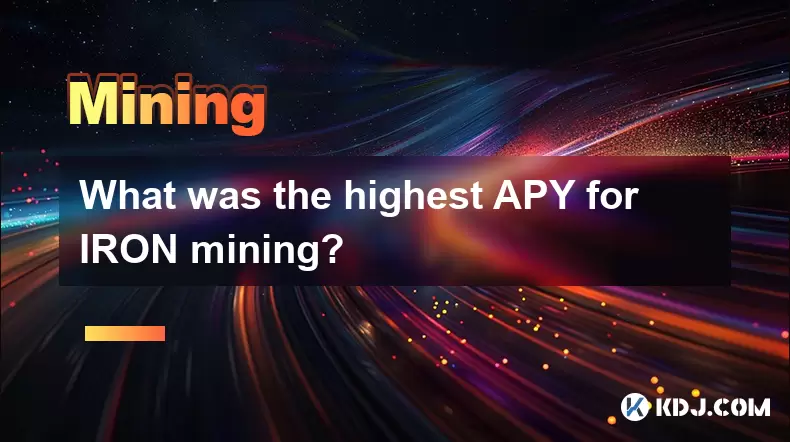-
 Bitcoin
Bitcoin $115000
0.12% -
 Ethereum
Ethereum $3701
4.50% -
 XRP
XRP $3.081
2.99% -
 Tether USDt
Tether USDt $0.0000
-0.01% -
 BNB
BNB $767.9
1.45% -
 Solana
Solana $169.5
3.13% -
 USDC
USDC $0.9999
0.01% -
 Dogecoin
Dogecoin $0.2106
4.30% -
 TRON
TRON $0.3334
1.62% -
 Cardano
Cardano $0.7564
2.54% -
 Stellar
Stellar $0.4165
0.76% -
 Hyperliquid
Hyperliquid $38.75
0.25% -
 Sui
Sui $3.593
3.00% -
 Chainlink
Chainlink $17.08
3.59% -
 Bitcoin Cash
Bitcoin Cash $573.6
4.35% -
 Hedera
Hedera $0.2508
-0.84% -
 Avalanche
Avalanche $23.07
6.46% -
 Ethena USDe
Ethena USDe $1.001
-0.02% -
 Litecoin
Litecoin $120.8
8.17% -
 UNUS SED LEO
UNUS SED LEO $8.943
-0.32% -
 Toncoin
Toncoin $3.400
-5.60% -
 Shiba Inu
Shiba Inu $0.00001255
1.54% -
 Uniswap
Uniswap $9.908
6.32% -
 Polkadot
Polkadot $3.718
2.10% -
 Monero
Monero $303.0
-0.74% -
 Dai
Dai $0.9999
-0.02% -
 Bitget Token
Bitget Token $4.392
0.91% -
 Cronos
Cronos $0.1403
6.31% -
 Pepe
Pepe $0.00001076
1.13% -
 Aave
Aave $267.2
1.80%
What is hashrate fluctuation?
Hashrate fluctuation impacts blockchain security, block times, and mining profitability, influenced by mining difficulty, market conditions, tech advancements, and regulatory changes.
Apr 08, 2025 at 08:08 pm

Hashrate fluctuation refers to the changes in the total computational power used by miners to process transactions and secure the blockchain network. This metric is crucial in the cryptocurrency world, particularly for networks like Bitcoin, Ethereum, and others that rely on proof-of-work (PoW) consensus mechanisms. Understanding hashrate fluctuation is essential for miners, investors, and enthusiasts as it directly impacts the security, profitability, and overall health of a blockchain network.
What Causes Hashrate Fluctuation?
Hashrate fluctuation can be attributed to several factors. One primary cause is the change in mining difficulty. Mining difficulty adjusts periodically to maintain a consistent block time, and when it increases, miners may find it less profitable to continue mining, leading to a decrease in hashrate. Conversely, a decrease in difficulty can attract more miners, boosting the hashrate.
Another significant factor is market conditions. When the price of a cryptocurrency rises, mining becomes more profitable, encouraging more miners to join the network, which increases the hashrate. Conversely, a drop in price can lead to miners shutting down their operations, causing the hashrate to fall.
Technological advancements also play a role. The introduction of more efficient mining hardware can lead to an increase in hashrate as miners upgrade their equipment. However, older, less efficient machines may be retired, contributing to fluctuations.
Regulatory changes and energy costs are additional factors. Governments may impose restrictions on mining activities, affecting the hashrate. Similarly, fluctuations in electricity prices can impact miners' operational costs, influencing their decision to continue or halt mining operations.
How Does Hashrate Fluctuation Impact the Network?
Hashrate fluctuation has several implications for a blockchain network. Firstly, it affects network security. A higher hashrate means more computational power is dedicated to securing the network, making it more resistant to attacks like 51% attacks. Conversely, a lower hashrate can make the network more vulnerable.
Secondly, hashrate fluctuation impacts block time. A higher hashrate can lead to faster block times, while a lower hashrate can result in slower block times. This can affect the overall transaction processing speed of the network.
Mining profitability is also influenced by hashrate fluctuations. When the hashrate increases, the competition among miners intensifies, potentially reducing individual miners' rewards. Conversely, a decrease in hashrate can lead to higher rewards for remaining miners.
Lastly, hashrate fluctuation can serve as an indicator of the network's health and miner confidence. A stable or growing hashrate suggests a healthy and confident mining community, while significant fluctuations may indicate underlying issues or market uncertainty.
How to Monitor Hashrate Fluctuation?
Monitoring hashrate fluctuation is crucial for anyone involved in the cryptocurrency space. Here are some steps to effectively track hashrate changes:
Use Blockchain Explorers: Websites like Blockchain.com or Etherscan provide real-time data on hashrate for various cryptocurrencies. These platforms offer charts and historical data, allowing users to analyze trends over time.
Subscribe to Mining Pools: Many mining pools, such as Slush Pool or F2Pool, offer detailed statistics on their hashrate. By joining or following these pools, users can get insights into the hashrate of specific networks.
Utilize Cryptocurrency Analytics Platforms: Services like Coinwarz or CryptoCompare provide comprehensive data on hashrate, mining difficulty, and other relevant metrics. These platforms often include tools for comparing different cryptocurrencies and analyzing their performance.
Follow Industry News: Staying updated with news from reputable sources like CoinDesk or CryptoSlate can provide context for hashrate fluctuations. News about regulatory changes, technological advancements, or market trends can help explain sudden shifts in hashrate.
Strategies to Mitigate the Impact of Hashrate Fluctuation
For miners and investors, mitigating the impact of hashrate fluctuation is essential. Here are some strategies to consider:
Diversify Mining Operations: By mining multiple cryptocurrencies, miners can spread their risk. If the hashrate of one network drops, they can shift their focus to another, more profitable network.
Invest in Efficient Hardware: Upgrading to the latest mining hardware can help miners stay competitive even during periods of high hashrate. Efficient machines can offset the impact of increased competition.
Monitor and Adjust: Regularly monitoring hashrate and other network metrics allows miners to make informed decisions. If the hashrate is trending downwards, miners might consider reducing their operations temporarily to avoid losses.
Join Mining Pools: Participating in mining pools can provide a more stable income stream. Pools distribute rewards more evenly among participants, reducing the impact of hashrate fluctuations on individual miners.
Case Studies of Hashrate Fluctuation
Examining real-world examples can provide deeper insights into hashrate fluctuation. One notable case is the Bitcoin hashrate drop in 2021. Following China's crackdown on cryptocurrency mining, the Bitcoin hashrate plummeted as many miners were forced to shut down their operations. This led to a temporary increase in block times and a decrease in network security. However, as miners relocated to more crypto-friendly regions, the hashrate eventually recovered, demonstrating the resilience of the network.
Another example is the Ethereum hashrate surge in 2020. As Ethereum's price soared, more miners joined the network, leading to a significant increase in hashrate. This surge contributed to faster block times and enhanced network security, showcasing the positive impact of increased mining activity.
Frequently Asked Questions
Q: How does hashrate fluctuation affect the price of a cryptocurrency?
A: Hashrate fluctuation can indirectly influence the price of a cryptocurrency. A higher hashrate often indicates increased miner confidence and network security, which can positively impact the price. Conversely, a significant drop in hashrate might signal potential issues, leading to a decrease in price. However, many other factors, such as market sentiment and macroeconomic conditions, also play a role in price movements.
Q: Can hashrate fluctuation be predicted?
A: While it's challenging to predict hashrate fluctuation with high accuracy, certain indicators can provide insights. Monitoring mining difficulty, cryptocurrency prices, and regulatory news can help anticipate potential changes in hashrate. Additionally, historical data and trend analysis can offer clues about future fluctuations.
Q: How does hashrate fluctuation impact smaller cryptocurrencies?
A: Smaller cryptocurrencies can be more vulnerable to hashrate fluctuations due to their lower overall hashrate and fewer miners. A significant drop in hashrate can lead to slower block times and increased susceptibility to attacks. Conversely, a surge in hashrate can enhance the network's security and efficiency, but it may also lead to higher mining difficulty, affecting miners' profitability.
Q: What role do mining pools play in hashrate fluctuation?
A: Mining pools can help stabilize hashrate by distributing the workload among many miners. When individual miners face challenges, such as increased difficulty or higher energy costs, pools can continue to operate efficiently, mitigating the impact of hashrate fluctuations. However, if a large pool experiences issues, it can still lead to significant hashrate changes for the network.
Disclaimer:info@kdj.com
The information provided is not trading advice. kdj.com does not assume any responsibility for any investments made based on the information provided in this article. Cryptocurrencies are highly volatile and it is highly recommended that you invest with caution after thorough research!
If you believe that the content used on this website infringes your copyright, please contact us immediately (info@kdj.com) and we will delete it promptly.
- Velo Universe, DEX, and DeFi Security: Navigating the Future of Decentralized Trading
- 2025-08-05 09:25:13
- Bitget Wallet Revolutionizes Solana with Gas-Free Transactions: A New Era for DeFi
- 2025-08-05 09:25:13
- Ozak AI, Crypto Boom, and ROI Potential: Is This the Next Big Thing?
- 2025-08-05 09:25:24
- Solana's ETF Hopes & the All-Time High Chase: Is SOL Set to Soar?
- 2025-08-05 09:25:24
- Coinbase's Brian Armstrong and the Art of Focused Work: A Deep Dive
- 2025-08-05 09:25:30
- Uniswap Price Prediction: Bullish Reversal on the Horizon?
- 2025-08-05 09:25:30
Related knowledge

What was the highest APY for IRON mining?
Jul 23,2025 at 05:14am
Understanding IRON Token and Its Mining MechanismThe IRON token is a stablecoin that operates within the Iron Finance ecosystem, primarily on blockcha...

What is impermanent loss in IRON pools?
Jul 23,2025 at 09:00am
Understanding Impermanent Loss in the Context of IRON PoolsImpermanent loss is a phenomenon that affects liquidity providers in decentralized finance ...

How to claim rewards from IRON mining?
Jul 23,2025 at 02:21pm
Understanding IRON Mining and Reward MechanismsIRON Finance operated as a decentralized finance (DeFi) protocol on the Polygon and Binance Smart Chain...

How to claim rewards from IRON mining?
Jul 29,2025 at 05:07am
Understanding IRON Mining and Reward MechanismIRON is a dual-token system designed to stabilize the value of a synthetic asset through a combination o...

IRON mining tutorial for beginners
Jul 27,2025 at 12:01am
What Is IRON and How Does It Work in the Cryptocurrency Ecosystem?IRON is a cryptocurrency token that operates on the Binance Smart Chain (BSC) and is...

How to calculate APY for IRON mining?
Jul 28,2025 at 09:49am
Understanding APY in the Context of IRON Token MiningWhen engaging in IRON token mining within decentralized finance (DeFi) platforms, Annual Percenta...

What was the highest APY for IRON mining?
Jul 23,2025 at 05:14am
Understanding IRON Token and Its Mining MechanismThe IRON token is a stablecoin that operates within the Iron Finance ecosystem, primarily on blockcha...

What is impermanent loss in IRON pools?
Jul 23,2025 at 09:00am
Understanding Impermanent Loss in the Context of IRON PoolsImpermanent loss is a phenomenon that affects liquidity providers in decentralized finance ...

How to claim rewards from IRON mining?
Jul 23,2025 at 02:21pm
Understanding IRON Mining and Reward MechanismsIRON Finance operated as a decentralized finance (DeFi) protocol on the Polygon and Binance Smart Chain...

How to claim rewards from IRON mining?
Jul 29,2025 at 05:07am
Understanding IRON Mining and Reward MechanismIRON is a dual-token system designed to stabilize the value of a synthetic asset through a combination o...

IRON mining tutorial for beginners
Jul 27,2025 at 12:01am
What Is IRON and How Does It Work in the Cryptocurrency Ecosystem?IRON is a cryptocurrency token that operates on the Binance Smart Chain (BSC) and is...

How to calculate APY for IRON mining?
Jul 28,2025 at 09:49am
Understanding APY in the Context of IRON Token MiningWhen engaging in IRON token mining within decentralized finance (DeFi) platforms, Annual Percenta...
See all articles

























































































